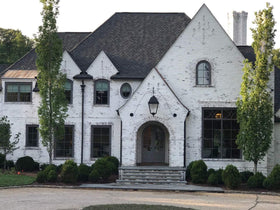
A Brief History of Wallpaper
Most of us don’t think about the history of wallpaper as we’re rolling it onto our walls. We rarely consider where it comes from when we’re picking out that perfect pattern, but wallpaper has, to pardon the metaphor, has a rich historical tapestry. It’s been with us in many different forms for centuries, all over the world, and it has served a functional and fashionable purpose for many different classes of people. In fact, wallpaper has a bit of a controversial history, which makes it all the more interesting.
Earliest Records in the History of Wallpaper
The earliest records of wallpaper we have, or at least records that actually come with examples, are from 16th century England. The wallpaper was a natural extension of textiles, which up until that point had dominated wall decorating. Many people used textiles for a dual purpose. First, the woven patterns could be incredibly beautiful and captivating, which made them popular with the rich and anyone else who could afford the more luxurious tapestries. The second reason is that textiles were warm and provided insulation from the cold, temperamental English weather.
By the 15th century, paper printing had started and people looked to such technology as a cheaper, more efficient way of getting the aesthetic effect of textiles. This wallpaper was printed and hand-coloured, using patterns that mimicked textiles in their design. Because of the variable size, people started using wallpaper in places other than walls, including chests and armoires, which is where some of the best preserved examples are found, away from the sun and damage of 16th century living.
Within a century, wallpaper had taken Western Europe by storm. It was particularly popular in Paris, where shopkeepers and the lower classes would use it to spruce up their homes and establishments. A wallpaper hanging guild was started in Paris at the turn of the 17th century and it started showing up in novels and historical accounts of the period.
Wallpaper Spreads Throughout The World
It was around this time that wallpaper had begun to show up in China. Unlike European wallpaper, Chinese versions were printed on rice paper and often decorated with flowers, landscapes, and elegant wildlife. Being the 17th century, it made its way West, where numerous imitators popped up and authentic imports became highly prized possessions. No longer a substitute for the more expensive textiles, it was by this time that wallpaper became its own, highly sought after, decorative material.
The history of wallpaper after the 17th century, and after its widespread adoption, follows many important technological movements. The 18th and 19th centuries saw changes to printing technology and, with it, changes to wallpaper production. By the 20th century, coloured wallpaper was not only common, but a fixture in well to do homes. Different materials broadened out the kinds of wallpaper available and, by the beginning of the 21st century, we have seen a blossoming industry of wallpaper made from plant fibres. Wallpaper, always subject to innovation, has come a long way from its origins.



